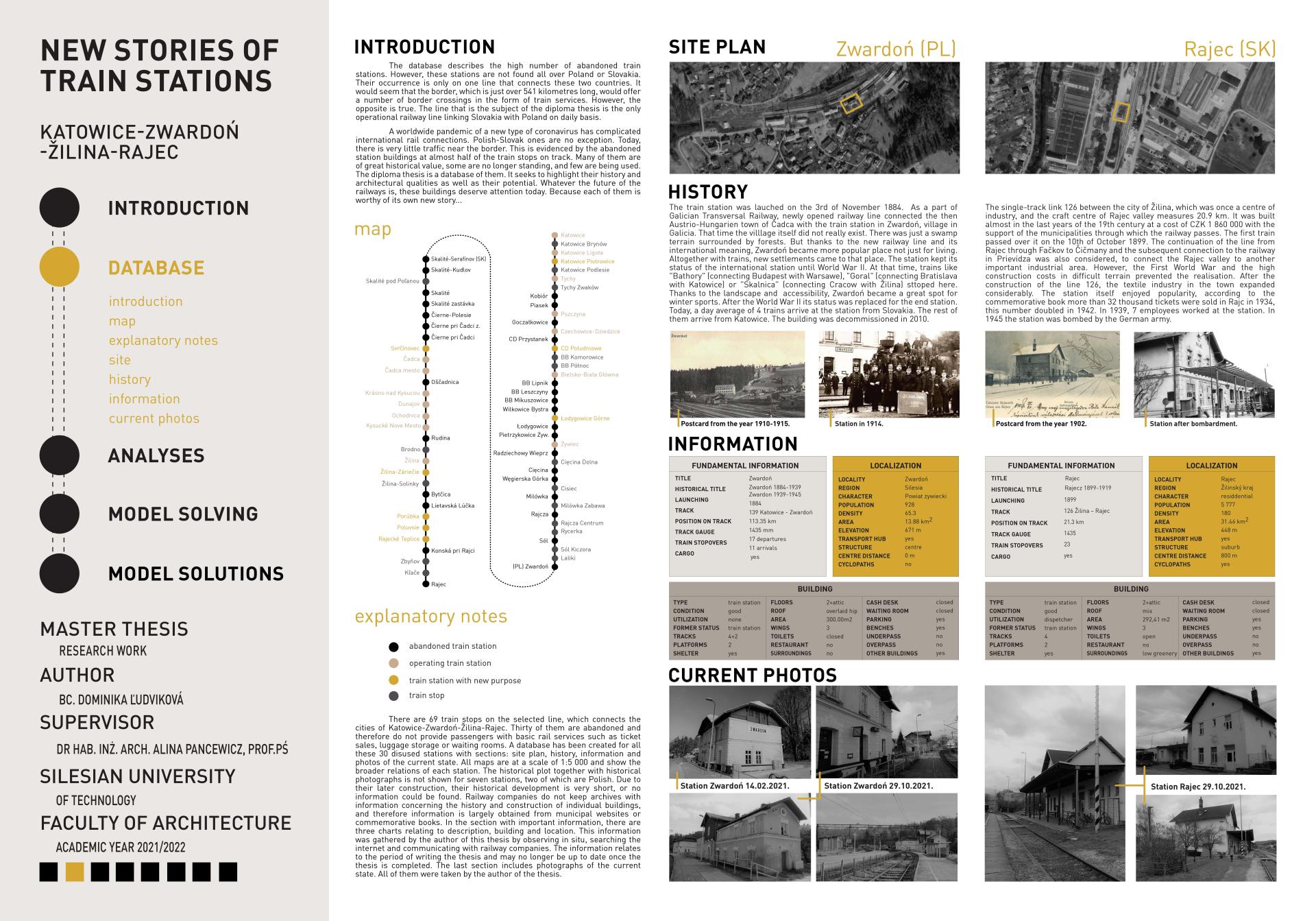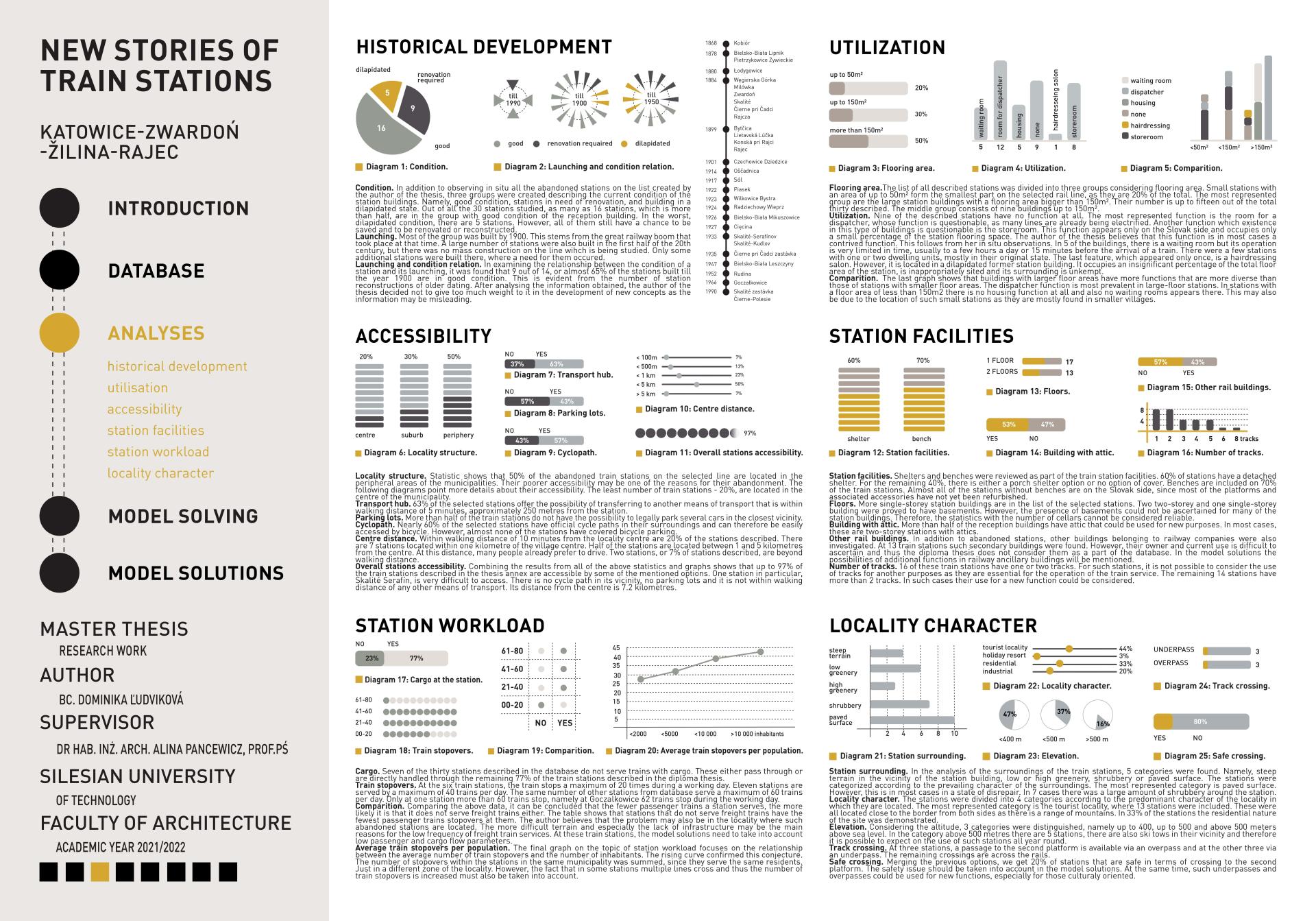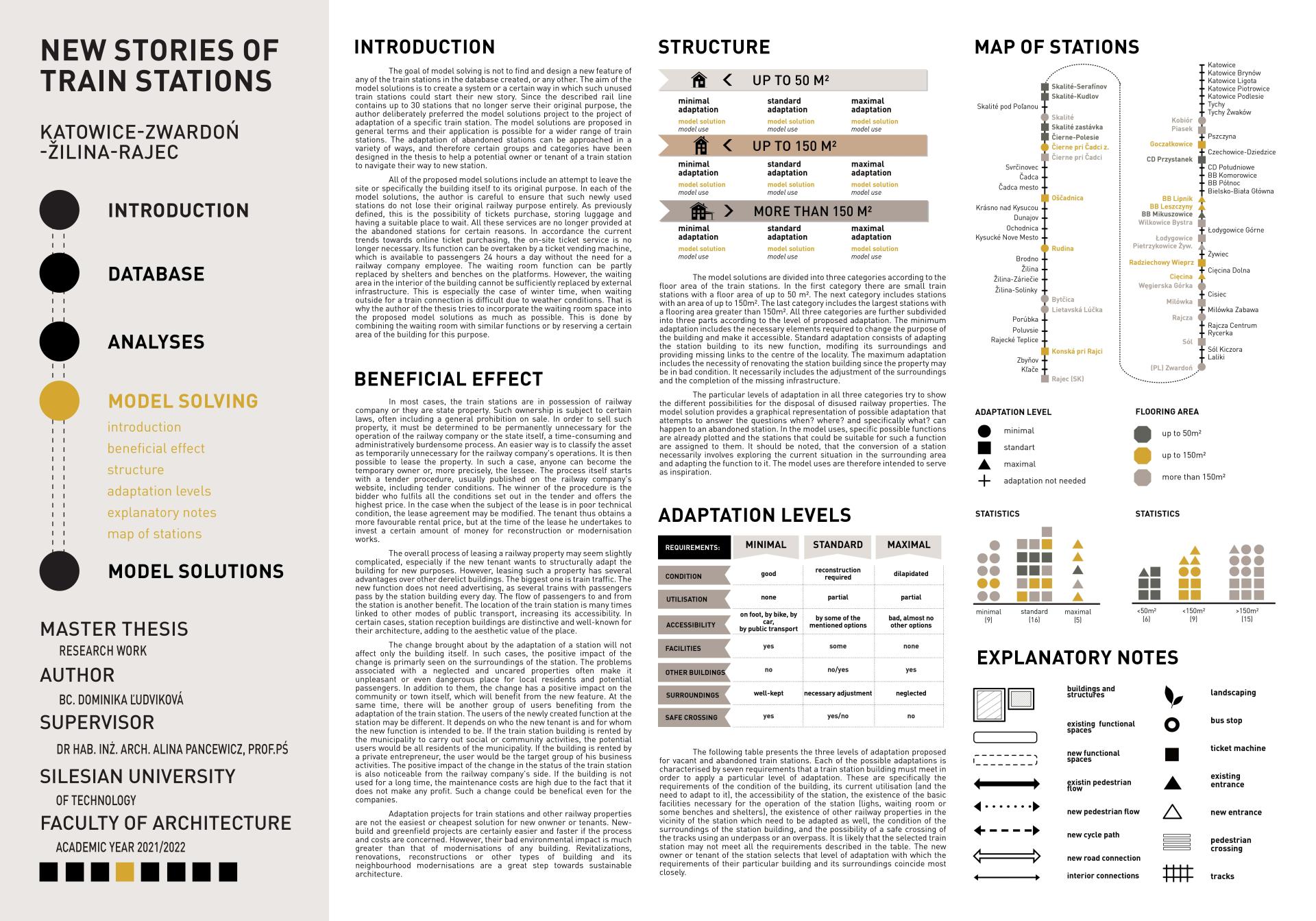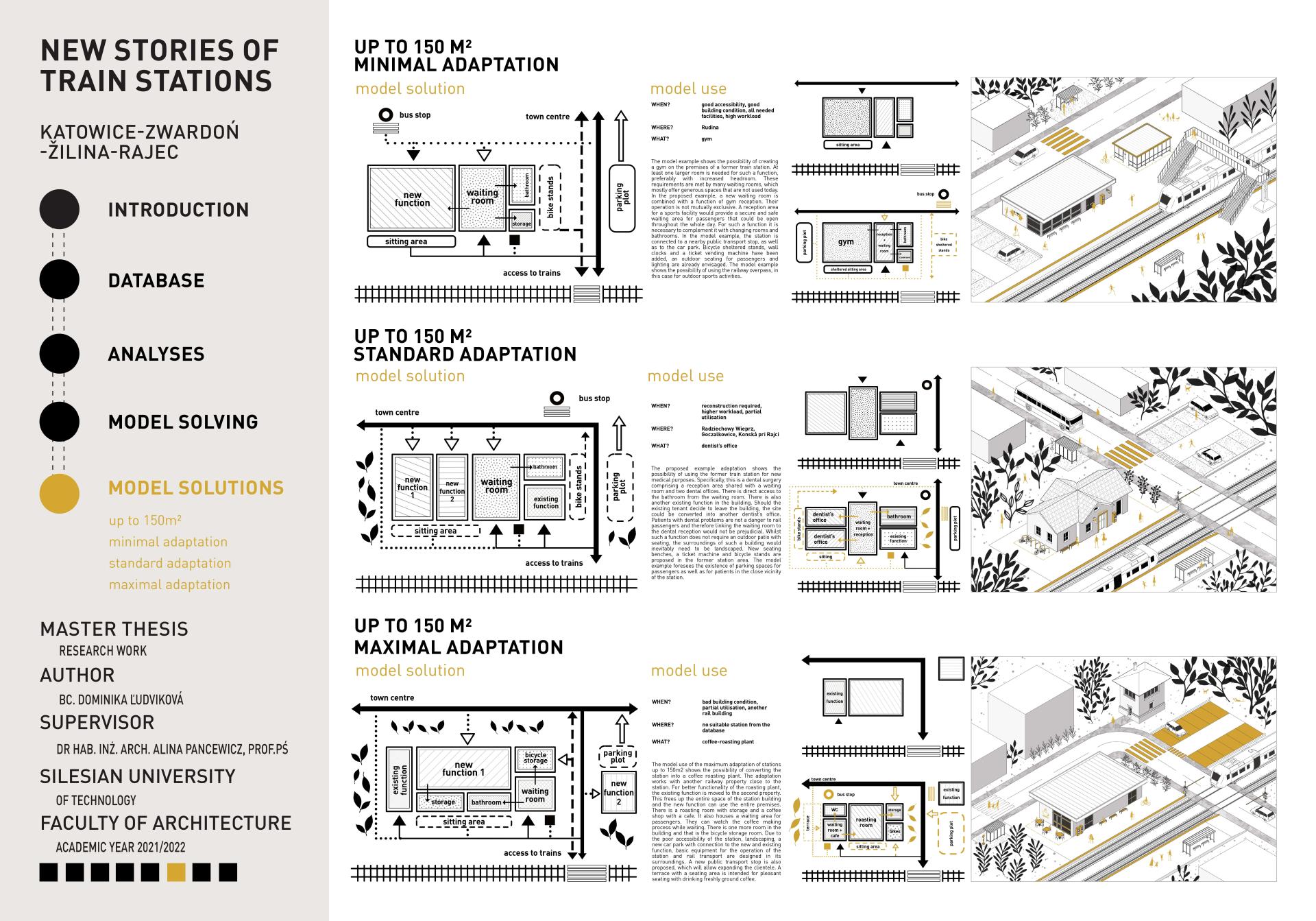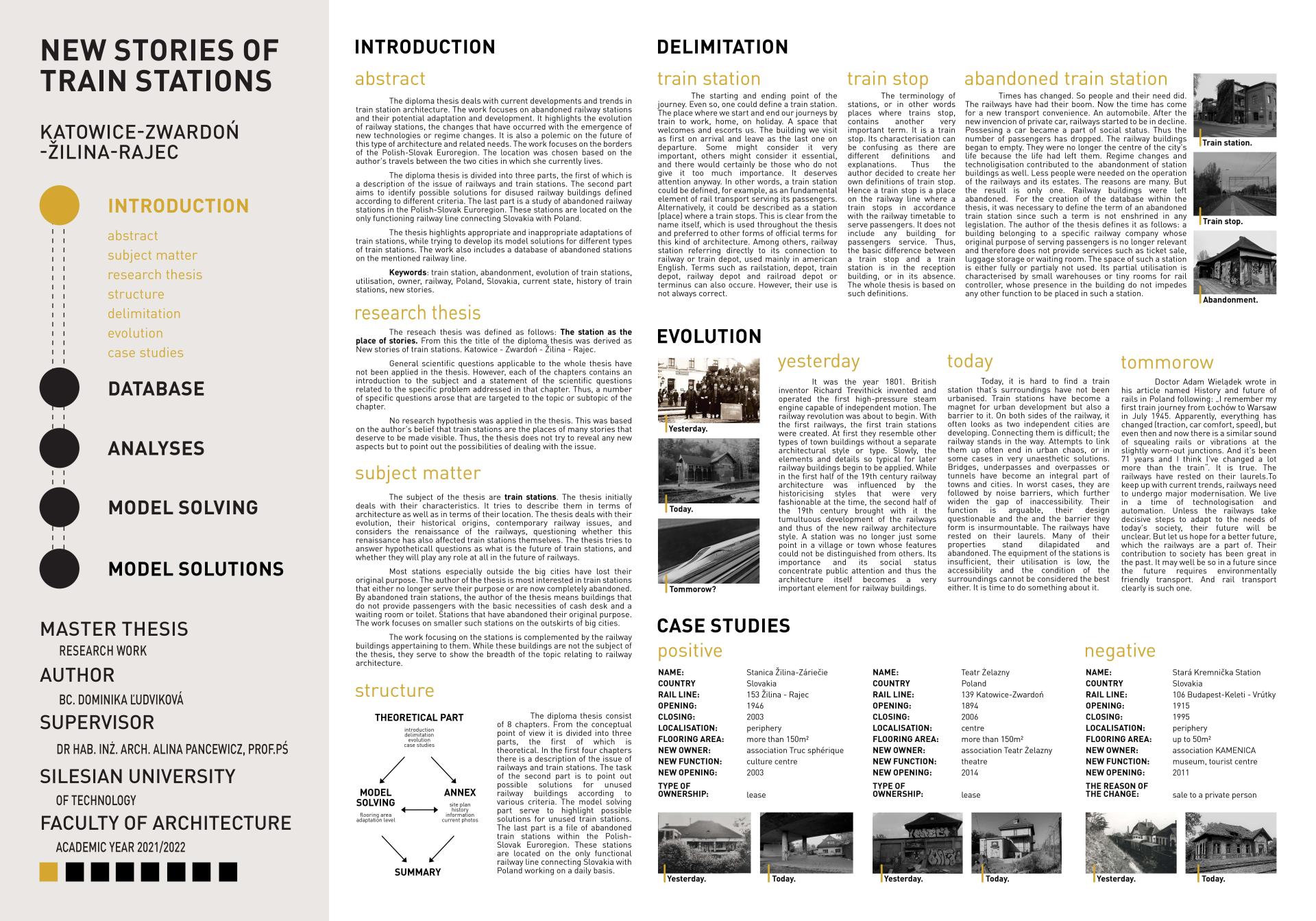New stories of train station
Basic information
Project Title
Full project title
Category
Project Description
The diploma thesis deals with current developments and trends in train station architecture. The work focuses on abandoned railway stations and their potential adaptation and development. The research of abandoned train stations was done on the borders of the Polish-Slovak Euroregion.
Geographical Scope
Project Region
Urban or rural issues
Physical or other transformations
EU Programme or fund
Which funds
Description of the project
Summary
The diploma thesis deals with current developments and trends in train station architecture. The work focuses on abandoned railway stations and their potential adaptation and development. It highlights the evolution of railway stations, the changes that have occurred with the emergence of new technologies or regime changes. It is also a polemic on the future of this type of architecture and related needs. The work focuses on the borders of the Polish-Slovak Euroregion. The location was chosen based on the author's travels between the two cities in which she currently lives.
The diploma thesis is divided into three parts, the first of which is a description of the issue of railways and train stations. The second part aims to identify possible solutions for disused railway buildings defined according to different criteria. The last part is a study of abandoned railway stations in the Polish-Slovak Euroregion. These stations are located on the only functioning railway line connecting Slovakia with Poland.
The thesis highlights appropriate and inappropriate adaptations of train stations, while trying to develop its model solutions for different types of train stations. The work also includes a database of abandoned stations on the mentioned railway line.
Key objectives for sustainability
Train stations built alongside operational railway lines are strategic assets of railway companies or the state itself. Their sale is almost impossible from a legal point of view. The thesis does not seek to discredit the railway estates completely. On the contrary. The new features are intended to be an attraction for new passengers and thus create a sustainable public transport travel system while making use of abandoned buildings. The proposed model solutions also envisage the possibility of a complete return of the station to its original function. However, their main objective is to strike a balance between the necessary spaces for the travelling public and the appropriate use of the station building over its entire flooring area.
Key objectives for aesthetics and quality
Vacant and abandoned properties have negative spillover effects that impact their neighbourhood. Time is an important variable for such buildings. The longer the building is vacant and exposed to decay, the more negatively it affects its surroundings. By the new use of such properties, the location receives a new aesthetic value and at the same time a new function. Passers-by, travellers and local residents no longer have to fear passing by an abandoned property or site.The adaptation of the train station also has an added aesthetic and functional value for the city, which is being densified in this way.
Key objectives for inclusion
The change brought about by the adaptation of a station will not affect only the building itself. In such cases, the positive impact of the change is primarily seen in the surroundings of the station. The problems associated with neglected and uncared properties often make it an unpleasant or even dangerous place for local residents and potential passengers. In addition to them, the change has a positive impact on the community or town itself, which will benefit from the new feature. At the same time, there will be another group of users benefiting from the adaptation of the train station. The users of the newly created function at the station may be different. It depends on who the new tenant is and for whom the new function is intended to be. If the train station building is rented by the municipality to carry out social or community activities, the potential users would be all residents of the municipality. If the building is rented by a private entrepreneur, the user would be the target group of his business activities. The positive impact of the change in the status of the train station is also noticeable from the railway company's side. If the building is not used for a long time, the maintenance costs are high due to the fact that it does not make any profit. Such a change could be beneficial even for the companies.
Physical or other transformations
Innovative character
Adapting vacant properties within the structure of the town and village creates a sustainable form of construction that avoids building on greenfield sites while harnessing the potential of existing infrastructure. Their adaptation creates a more aesthetic environment, which is currently a haven for vandals and a magnet for social problems. The new function adds to the attractiveness of the environment and attracts new people as well as new train passengers. The project shows that the new owner or tenant can be absolutely anyone. In larger adaptation projects led by investors such as the municipality, projects can be created to support socially disadvantaged residents. This is evidenced by the case studies described within the text section of the thesis.

